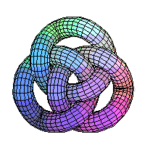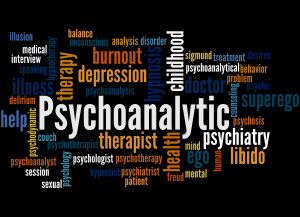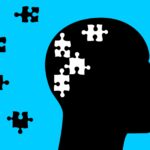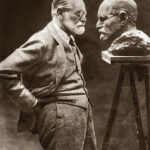 The importance of meaning in psychoanalytic psychotherapy is core to the field. Psychoanalytic psychotherapy recognizes that the meaning of behavior is important. Unlike most behavioral therapies where behavior is explained in terms of learning and contingencies, psychoanalytic theories support the idea that our behavior is purposeful and meaningful.
The importance of meaning in psychoanalytic psychotherapy is core to the field. Psychoanalytic psychotherapy recognizes that the meaning of behavior is important. Unlike most behavioral therapies where behavior is explained in terms of learning and contingencies, psychoanalytic theories support the idea that our behavior is purposeful and meaningful.
While there is no argument that we are influenced by rewards and punishments that encourage or discourage our actions, we also persist in actions regardless of consequences and against our better judgment. Some of these actions can be called addictions or habits, but these terms only address one aspect of their explanation.
Psychoanalytic presuppositions about purposefulness of behavior recognizes that, as humans, we are more than reflexive creatures at the mercy of external cues and internal biochemistry. We are active and creative authors of our life experience, continuously trying to make sense out of our circumstances. We think in stories while imbuing meaning into all that occurs within and around us. The importance of meaning in psychoanalytic psychotherapy cannot be overstated.
Whereas much of that meaning is conscious and readily describable in words, there is also a deeper, more personal meaning that constitutes our private truths. Such truths are not always easily verifiable or empirically validated, but they remain rooted in our subjective experience of living and being.
A person molested as a child may remain in a subjective state of guilt and shame for a lifetime, regardless of any objective facts to the contrary. Likewise, growing up in a home that is emotionally cold and rejecting may forge an expectation for betrayal and mistrust in all subsequent close relationships. These types of truths are known viscerally and emotionally without conscious awareness. The importance of meaning in psychoanalytic psychotherapy allows the patient to process their history.
Through the exploration of meaning, the psychoanalytic patient is helped to discover their fundamental beliefs, values, and desires in the context of a therapeutic relationship, where transference reveals the dynamics of their personal history as they knew it to be. In turn, they come to know themselves as a unique being beyond the definition ascribed to them by others.
The patient’s truth is respected and witnessed by a therapist dedicated to enhancing the patient’s potential. Only the patient themselves can effectively re-define who they are and who they strive to become. Whereas the therapist may help illuminate unconscious meaning through interpretation of statements and actions, these interpretations are, at best, approximations of alternative truths and examples of empathic acceptance of the person.
Since the truths were constructed in a particular time and context, their meaning may become changed through reflection and discussion. Thought patterns, descriptive narratives, slips of the tongue, non-verbal gestures, and other subtle cues may lead to insights that are emancipating from the past.
Similarly, in current conflicts and issues, a patient may come to understand how symptoms belie an unconscious wish or fear. For example, a patient developed a sudden attack of hiccups for several days that prevented him from speaking freely with his girlfriend. Upon exploration it was discovered that the attack began after she brought up her desire to get married. The patient left our session discounting my interpretation of his hiccups as a defense against speaking with her. He denied any possible meaning to his symptoms and was convinced that his physician’s prescription for an anti-seizure medication was his best option. A few hours later, he left me a message that the hiccups had stopped once he got to his car in the parking lot outside my office. While he was relieved from his symptom distress, he was angry that he had to continue the discussion with his girlfriend.
Finally, I think it is important to note that meaning is not found or discovered, but rather created. Psychoanalytic therapy is a collaborative process of inquiry, exploration, and creativity that is uniquely tailored for every patient.
Thus, the use of “canned” or generic meanings or symbolism often does a disservice to our patients by ignoring the significance of their histories. When a patient asks, “what does it mean when…”, they are subordinating themselves to a position of ignorance and elevating the therapist to an idealized other who is supposed to know what they cannot know. The unequal power dynamic undermines the patient’s growth and fosters an undesired dependency.
The therapeutic relationship is, potentially, a mutually enriching process of meaning for both the patient and the therapist.
If you would like to learn more about the psychoanalytic process, you may find the following articles to be of interest: 7 Reasons Why Psychoanalysis is Still Relevant Today; Value of Psychoanalysis; and Psychoanalysis, Resilience, and Meaning-Making.
Interested in earning a Certificate of Advanced Study in Psychoanalytic Psychotherapy? Simply complete 48 CE credits with our psychoanalytic courses, including at least three course courses. Entirely online, accessible 24/7, and paced at your convenience.
 The Institute of Advanced Psychological Studies is approved by the American Psychological Association to sponsor continuing education for psychologists. The Institute of Advanced Psychological Studies maintains responsibility for this program and its content.
The Institute of Advanced Psychological Studies is approved by the American Psychological Association to sponsor continuing education for psychologists. The Institute of Advanced Psychological Studies maintains responsibility for this program and its content.


 As a psychoanalytic psychologist who has specialized in treating children and adolescents, I have often been asked how psychoanalysis can benefit children. Given society’s attention to scientific evidence-based data, one would expect that theories that consider instincts, drives, and Oedipal Complexes must be archaic and obsolete.
As a psychoanalytic psychologist who has specialized in treating children and adolescents, I have often been asked how psychoanalysis can benefit children. Given society’s attention to scientific evidence-based data, one would expect that theories that consider instincts, drives, and Oedipal Complexes must be archaic and obsolete. How Lacan’s theory can be helpful in psychotherapy may not be obvious and is often overlooked.
How Lacan’s theory can be helpful in psychotherapy may not be obvious and is often overlooked. What is the purpose of psychotherapy? Many new patients ask, “How can psychotherapy help? How will talking about my problems make my life better?” The question seems well founded. People often seek psychotherapy when they feel at a loss for what to do about the misery in their lives. They may recognize that their sleep is disrupted or they are gaining weight, preoccupied by distressing thoughts, easily angered or irritated, arguing with their family and friends, and wondering who or what is to blame.
What is the purpose of psychotherapy? Many new patients ask, “How can psychotherapy help? How will talking about my problems make my life better?” The question seems well founded. People often seek psychotherapy when they feel at a loss for what to do about the misery in their lives. They may recognize that their sleep is disrupted or they are gaining weight, preoccupied by distressing thoughts, easily angered or irritated, arguing with their family and friends, and wondering who or what is to blame.
 For many years, British psychologist Richard Bentall has promoted rethinking about the way psychiatric diagnosis has been conceptualized. When I first read his book, Madness Explained (Bentall, 2006), I was immediately impressed by his carefully researched and referenced arguments that challenged many mainstream views on mental illness. For example, he challenged the prevailing assertion that genetic research has demonstrated conclusive evidence that schizophrenia and bipolar illness are genetically determined and are fundamentally medical diseases. His work is careful not to rehash outdated arguments of nature versus nurture or mind/body dichotomies, but rather to put into proper focus the evidence and limitations of such research.
For many years, British psychologist Richard Bentall has promoted rethinking about the way psychiatric diagnosis has been conceptualized. When I first read his book, Madness Explained (Bentall, 2006), I was immediately impressed by his carefully researched and referenced arguments that challenged many mainstream views on mental illness. For example, he challenged the prevailing assertion that genetic research has demonstrated conclusive evidence that schizophrenia and bipolar illness are genetically determined and are fundamentally medical diseases. His work is careful not to rehash outdated arguments of nature versus nurture or mind/body dichotomies, but rather to put into proper focus the evidence and limitations of such research. As a practicing psychoanalyst for the past 30-plus years, I have sought to integrate the wisdom from many mentors. My supervisors and training analyst guided me through the collected works of
As a practicing psychoanalyst for the past 30-plus years, I have sought to integrate the wisdom from many mentors. My supervisors and training analyst guided me through the collected works of  Psychoanalysis advocates on behalf of the individual’s personal truths, as follows:
Psychoanalysis advocates on behalf of the individual’s personal truths, as follows: Today’s Wall Street Journal offered a
Today’s Wall Street Journal offered a  First published by the American Psychiatric Association in 1952, the DSM began as a brief manual listing 106 diagnoses; now, in its fifth edition it consists of a weighty book outlining nearly 300 diagnoses.
First published by the American Psychiatric Association in 1952, the DSM began as a brief manual listing 106 diagnoses; now, in its fifth edition it consists of a weighty book outlining nearly 300 diagnoses. 




